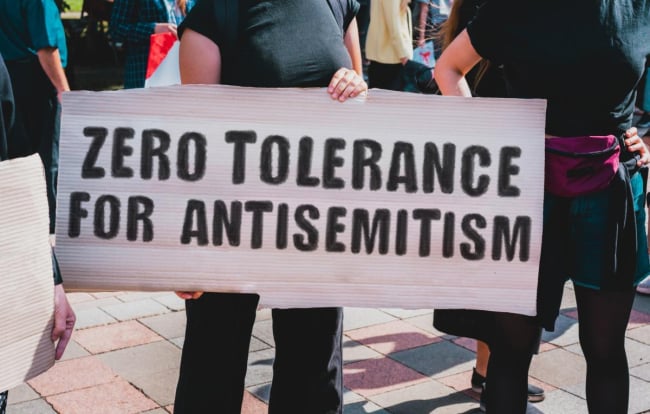You have /5 articles left.
Sign up for a free account or log in.

Andrii Koval/iStock/Getty Images Plus
From the earliest days of the modern university system, American Jews have experienced a changing face of antisemitism as they chose where to attend college.
In my grandparents’ generation, the question was if Jews could even be admitted into the system. “Are Jews allowed here?” they asked. “Is there a quota system?”
By the time I went to college, the quota system was long gone, antisemitism and hate-fueled violence factored less into our decision-making, and the questions were more logistical: “Is there kosher food on campus?” and “Does Hillel do a Seder on the first night and the second night?”
But for today’s Jewish students, including my own children, the situation has changed: they are asking whether or not they will be safe, as Jews, on campus. They’re asking questions like, “What’s the security like at the Hillel here?” and “Will someone harass me because I think Israel should exist?”
This generation is asking these questions for a reason: all across the country, a wave of anti-Israel and often antisemitic activity has made the American college campus an increasingly unsafe place for Jewish students. Many of these aggressors are self-identified progressives, who believe that opposition to Zionism is a prerequisite to being a part of campus life. The effect of this belief is widespread exclusion of the vast majority of young Jews who support the Jewish state and rising occurrences of outright antisemitism on campus.
In August, nine student groups at the University of California, Berkeley, voted to refuse invitations to speakers who support Israel or Zionism, effectively banning the vast majority of Jews. In September, at the University of Wisconsin at Madison, someone chalked on campus grounds: “zionism is racism” and “zionism is genocide” and that campus “Zionist” organizations have “blood on their hands,” explicitly naming Chabad and J Street. The Students for Justice in Palestine chapter on campus released a statement maintaining this was perfectly acceptable discourse.
Later that month, the Wellesley College newspaper editorial board openly endorsed the dangerously antisemitic Mapping Project, which has created an interactive map pinpointing the locations of Massachusetts institutions, many of them Jewish, it accuses of being “responsible for the colonization of Palestine or other harms such as policing, U.S, imperialism, and displacement.” The student government then stood by the editorial board after it was criticized by college leadership. (The editorial board has since issued a statement walking back its support for the Mapping Project.)
These shocking anecdotes are just a few standout data points from the wider trends, both on college campuses and across American society as a whole. In 2021, the Anti-Defamation League recorded a total of 2,717 antisemitic incidents across the country, an all-time high since we started tracking the numbers in 1979.
College campuses are a heated microcosm of this; ADL’s just-published annual Campus Report found a total of 359 extreme anti-Israel incidents at American colleges and universities last academic year. These events run the gamut from university-sponsored student groups inviting inflammatory or antisemitic speakers to campus to an anti-Israel protester throwing a rock at Jewish students gathered outside a campus Hillel.
These events create a campus climate that is increasingly hostile to Jewish students. In a survey ADL conducted with Hillel International, nearly one-third of Jewish college students reported personally experiencing antisemitism directed at them on campus or by a member of the campus community, and 15 percent of Jewish students reported that they felt the need to hide their Jewish identity from others on campus.
No student should feel intimidated in this way on a college campus. Fixing this climate means helping students, faculty and administrators better identify and respond to antisemitism. Campus leaders, from college presidents to residential advisers, must use their positions of power to stand up for Jewish students and oppose antisemitism in all its forms.
This can start with ensuring diversity, equity and inclusion and sensitivity training sessions, now commonplace on campuses, place more of an emphasis on the nuanced challenges Jewish students face. Administrators and student leaders should learn about real-life incidents to understand examples of antisemitism and how to respond. It is also vitally important that trainings help introduce the campus community to some of the basic definitions, myths and tropes of antisemitism and anti-Zionism. Antisemitism remains deeply misunderstood, hampering efforts to fight it. Increasing understanding is the first step toward reducing hostility.
Those trainings will mean nothing, however, without swift and decisive action by leaders and campus communities. Administrators and students alike must condemn antisemitic incidents without hesitation, just as they would for any other instance of bigotry.
Stanford University offers a positive example of an institution reflecting on past issues with antisemitism, including limits on Jewish admissions as late as the 1950s, and pledging to take concrete actions to address the bias against Jewish students that persists to this day.
Absent this kind of response, Jewish students are left questioning whether or not they are safe and welcome on campus. My kids shouldn’t have to ask these questions. No kids should have to ask these questions: it’s heartbreaking. And this isn’t just about Jewish kids: movements that start by targeting Jews rarely end with Jews. We must protect all students on our campuses. Doing this means stopping the tide of campus antisemitism before it grows any further.




